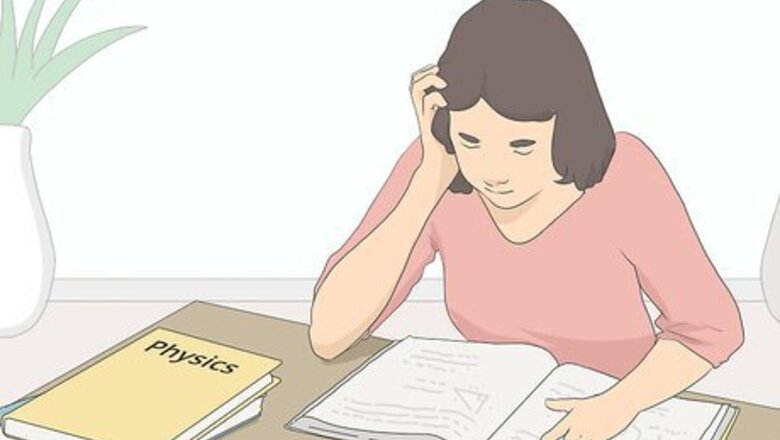
views
Organizing the Exam Material
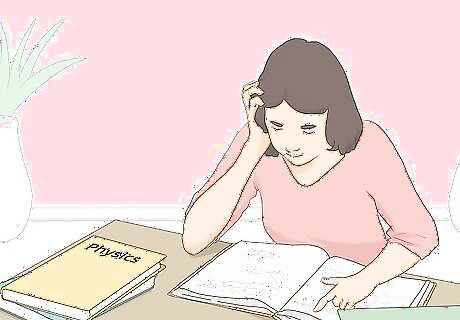
Reread the notes you took on homework and class readings. If you’ve been keeping up with your classwork, then identifying the correct material for the test is much easier. Go back and read over the material from the units that are on the test. Look for concepts that you highlighted, underlined, or spent a lot of time on in class. These are all indications for material that will appear on the test. If a test is on Chapters 3-5, for example, then go back to the work you did on those chapters. Look at the reading notes you took and the notes from class to identify what you need to know from those sections. If your teacher told you to underline or circle anything in your notes, then it will probably be on the test. Take note of any words or concepts you highlighted.
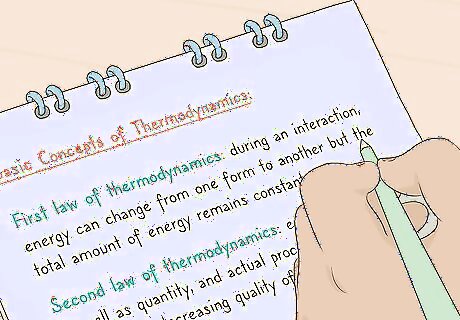
Write down the key concepts that will be on the test. This creates a comprehensive list of material that you need to know for the test. As you read through your notes, jot down all the equations, concepts, vocabulary, and formulas you need for the test. Then, use this information to create your study guide. Don’t worry about organizing these concepts or putting them in a specific order yet. Just get the concepts on paper so you can organize them later on. Also write down basic information about each concept. For example, don’t copy down the velocity formula without also noting when you would use the formula.
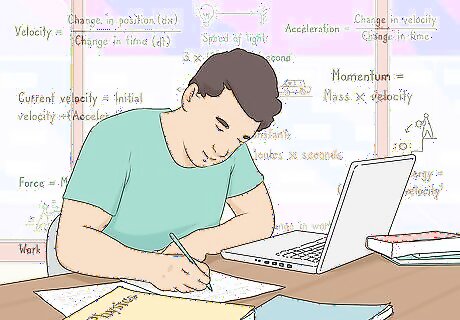
Make a study sheet that covers all the key concepts. When you’ve identified all the key concepts, organize the information into a study guide for the test. This is a comprehensive, but concise, list of everything you need to know for the test. Write down each concept, plus a few bullet points that tell you what you have to know about it for the test. The exact layout of the guide depends on the material on your test. Break the material into themes so you can scan the sheet easily and find what you need. For example, dividing the sheet into formulas, symbols, and key words is a good structure for a physics exam. Don’t try to pack every detail on each concept into your study guide. Just list the concepts and some key information. If you need more details, you can look them up later as you study. Note down where in the textbook or notes you can find these concepts in case you need more information.
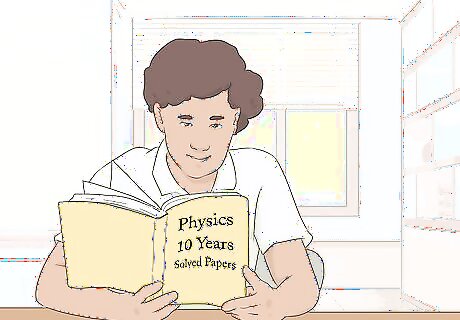
Look at older exams to see what types of questions your teacher asks. This is a good practice to get a feel for the types of tests your teacher gives. If you’ve had tests before, review them to see if your teacher likes to focus on specific concepts of skills. They may place a lot of emphasis on being able to solve problems and less on rigorously knowing theory and derivations.Use this information to adjust your studying to the teacher’s testing style. This is especially important if the upcoming test is a cumulative final. You have to understand old material to pass the test.
Practicing the Material

Do practice problems to find topics you're weak in. Your classwork and homework are the best guides for the types of problems you’ll see on the test. Go back and do some practice problems in each category. If you don’t have any trouble on one problem type, then you know you don’t have to spend a lot of time studying it. If you’re weak in a particular area, then you know where to focus your studying efforts. If there are multiple types of problems, do a few in each category. Don’t stop at just one, because that might be an easy one. Make sure you understand why you’re getting the correct answer. If you’re just making lucky guesses, then this might not work on the test. Understand the concepts you’re using to find the answer.

Review problems that you had trouble with. While doing practice problems, you’ll probably encounter some that are difficult for you. This indicates that you’re weak in this particular area. Go back and review the concepts behind those problems. Understand why you’re getting them wrong, and how to find the right answer. This way, you’ll gradually work through the areas that you’re weak in. After you’ve reviewed problems in a particular category, go back and try to solve more practice problems. If they’re easier this time, then your review efforts were successful. If you’re completely stuck on a problem, try talking to your teacher after class for help.

Understand the key formulas you’ll have to use. Physics, like math, uses a number of equations and formulas to solve problems. The unit that your test is on will probably introduce a few new ones, or new situations where you have to use past formulas. Study each formula on the test. Understand when and why to use it, and how to plug numbers into it correctly. With a good understanding into each formula, you can use them correctly to solve problems. Physics teachers caution against simply memorizing formulas, because you don’t actually learn anything. Rather, try to understand the concepts behind each formula. This makes figuring out hard problems much easier.
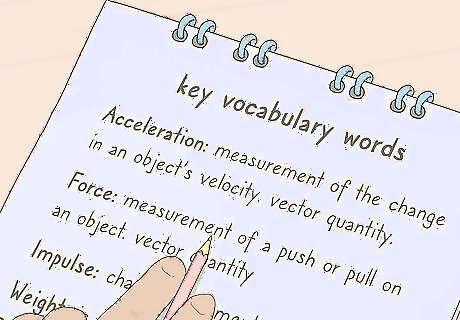
Note the key vocabulary words you have to remember. Physics uses many key words that tell you which formulas to use and what to solve for. Make sure to include important vocabulary words on your study sheet and define them. Include words that are specific to this section, and also basic words from past work like mass. Some key words sound similar, so be sure you can recognize each one. For example, weight is not the same thing as mass. Develop a good understanding of the differences between the two to avoid making the mistake on the test. Memorize the situations that key words refer to. For instance, buoyancy refers to an object’s ability to float, so you know this is what you’re calculating for when you see this word.

Learn the meaning of each symbol on the test. Physics uses symbols to denote certain quantities and units. If you don’t know the symbol meanings, then you won’t be able to solve most of the problems on the test. Review the formulas in this test section and see which symbols you need to know. Add them to your study sheet and understand what they mean so you don’t get confused. For example, an uppercase Q refers to heat measured in joules (J). If you didn’t study your symbols, you wouldn’t know how to solve this equation. Depending on how many symbols you need to know, you may need a separate sheet just for them. This will prevent your study guide from getting too crowded. Pay special attention to Greek and other non-Latin letters. Learn how to properly write them so they can't be mistaken for other letters.
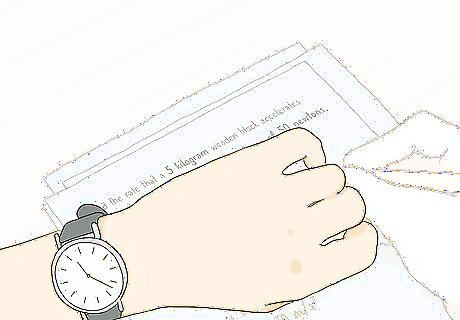
Time yourself doing practice problems after studying. While you shouldn’t rush, tests do have time limits, so get a feel for what it’s like to solve problems under pressure. After you’ve studied a bit, set a timer and do a few practice problems. Find out on average how long it takes you to solve problems. If you work slowly, practice speeding up so you don’t run out of time on the test. Ask your teacher if they can tell you how many questions will be on the test. Then, you can work out how fast you have to answer each question. If your teacher says there are 20 questions and the class period is 1 hour, then you have 3 minutes for each question. On the test, it’s best to skip problems that you get stuck on and completing the rest of the test. Then return later to try them again.
Developing a Study Schedule

Find a comfortable study space free from distractions. A good study environment is important for effective test prep. Go somewhere without loud TVs, radios, or people that will distract you. Make sure there is adequate light so you don't strain your eyes. When you find a good area to work in, make it your regular study spot so your brain knows that it's time to focus. If your home is noisy and you don't have much space to yourself, try studying at a local library instead. Some people do study better with a bit of background noise. In this case, try putting the radio on low so it doesn't disturb you.

Keep up with all your class and homework assignments. The best way to study effectively is do all the necessary work before the test is even announced. That way, studying is more of a review than trying to learn new things. This gets rid of a lot of stress leading up to exams. A good strategy is looking over all your class material for an hour or so after class to review what you did. Then you’ll absorb the material and have to study less later on. Ask your teacher throughout the semester for help if you’re having trouble on class or homework assignments. Solving problems early on avoids panic before the test.

Study a little bit every day leading up to the test. Avoid last-minute cramming sessions. This stresses you out, and also you won’t learn the material as well. If possible, start preparing about a week before the test. Draw up a schedule of material so you can do a little each day to avoid getting overwhelmed. On the first day, review your materials and draw up your study sheet. Then break the material into sections that you’ll study each day. If the test is on Friday, a good schedule would be making the study sheet on Monday, reviewing problems on Tuesday, memorizing symbols and vocabulary on Wednesday, and going over the study sheet on Thursday.
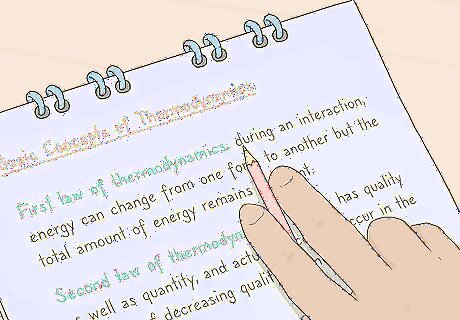
Go over your study sheet the night before the exam. If you’ve studied a bit every day, then you shouldn’t have to cram the night before the exam. Just review your study sheet. Try to define all of the key concepts and formulas on it to test your knowledge. If this goes well, then you’ve studied all you can. If you get stuck on some material, then look it up to refresh yourself.










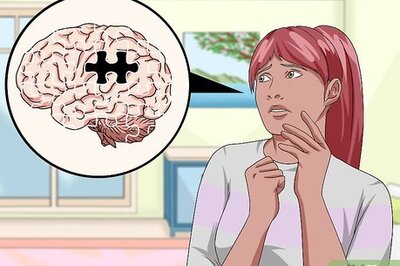






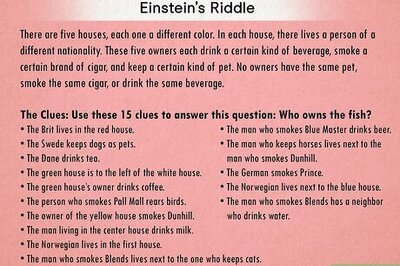
Comments
0 comment